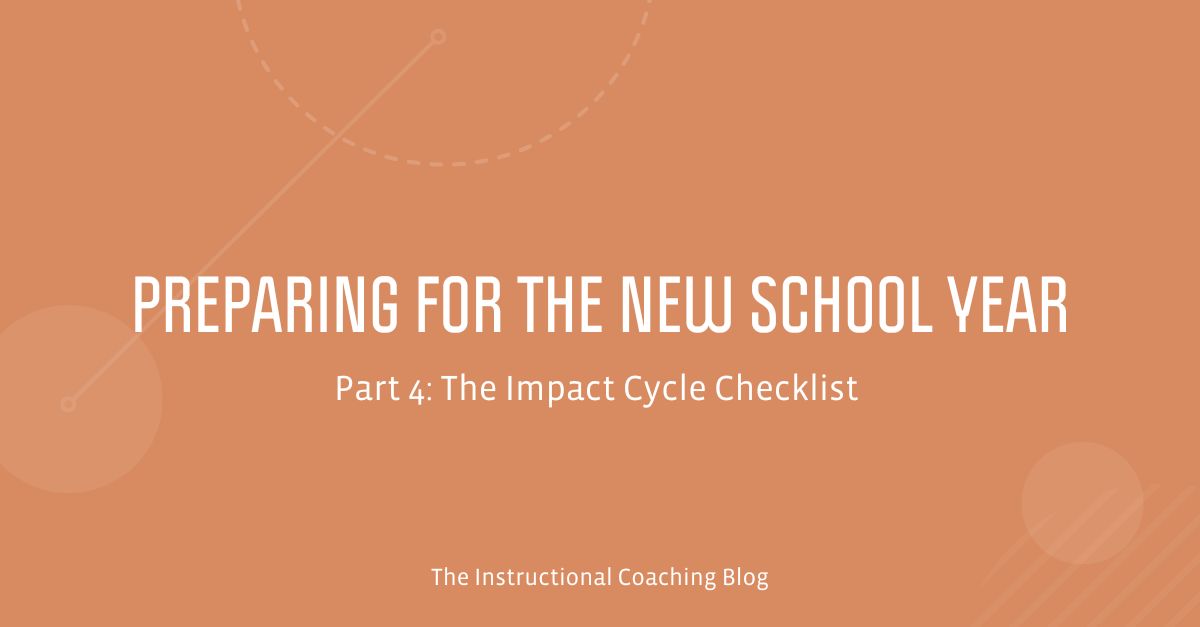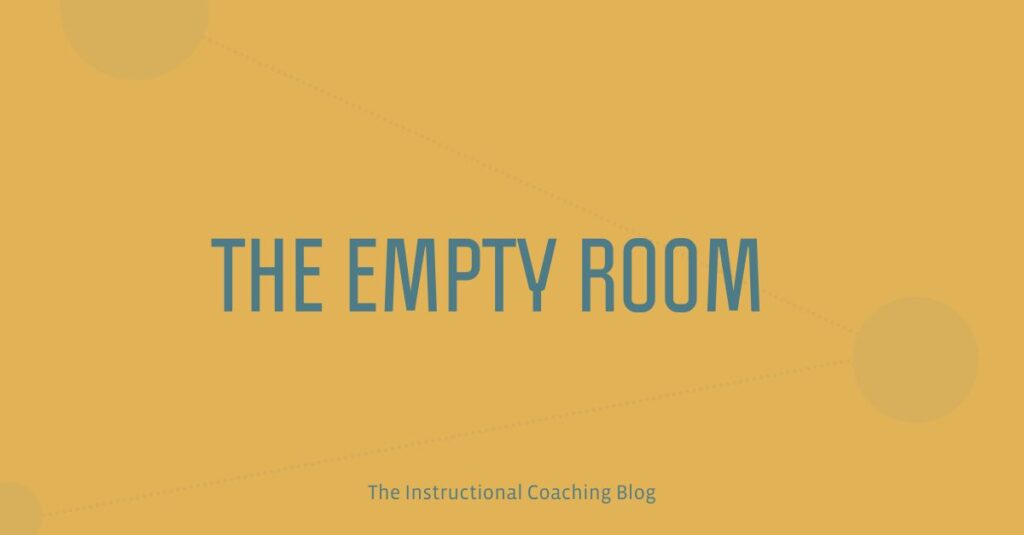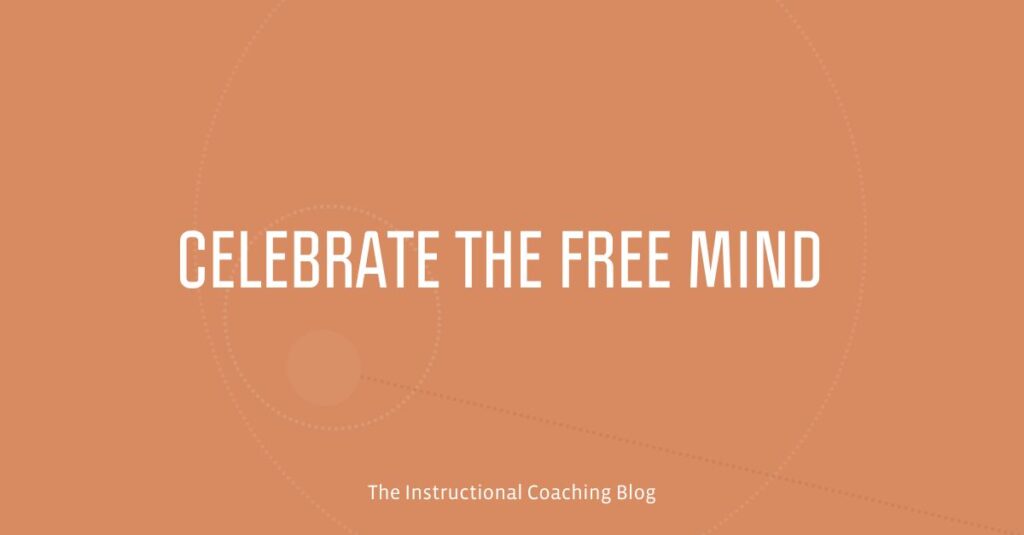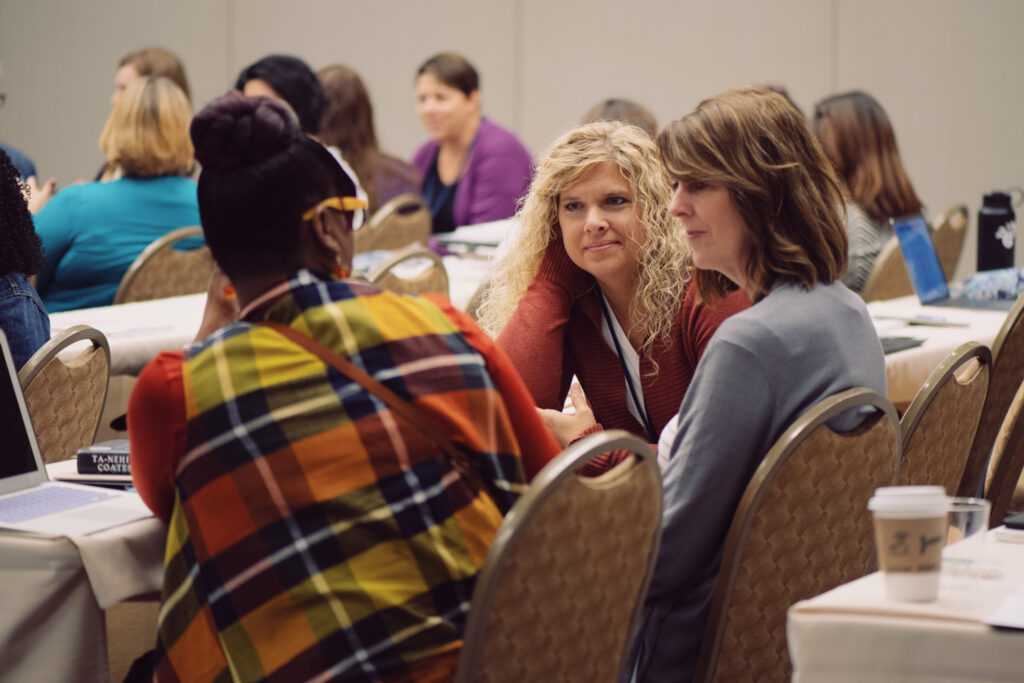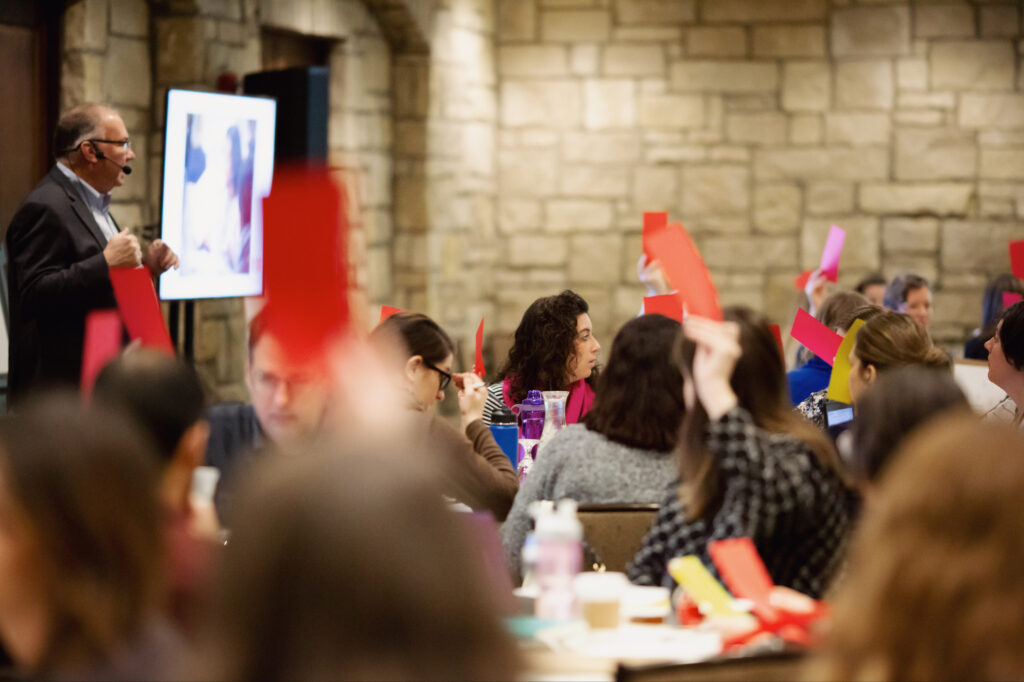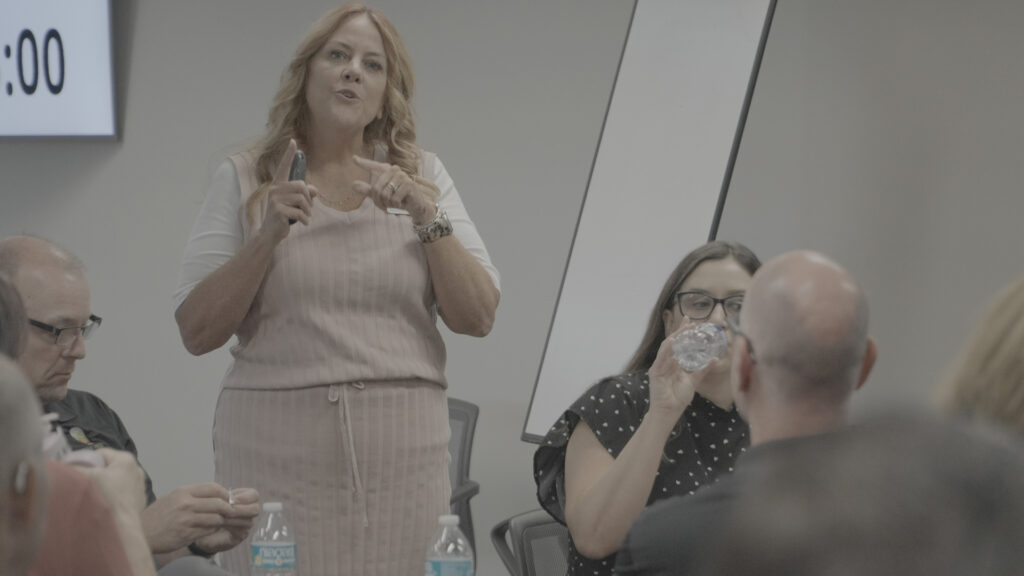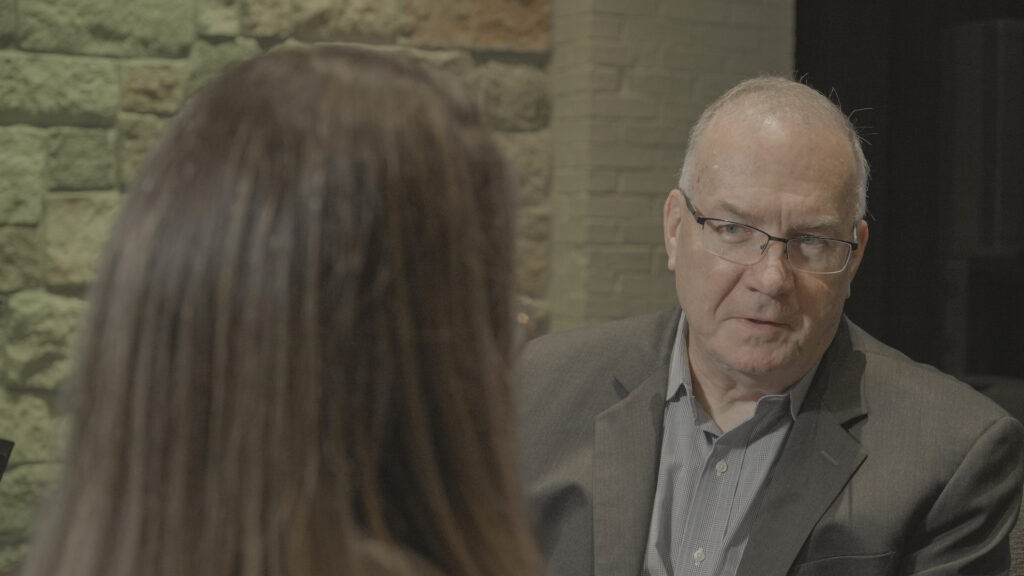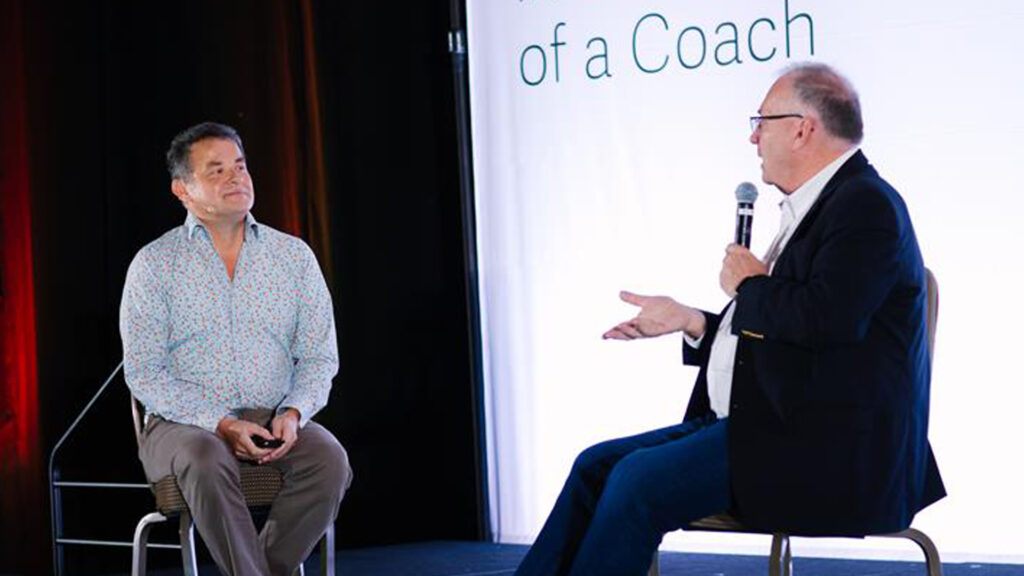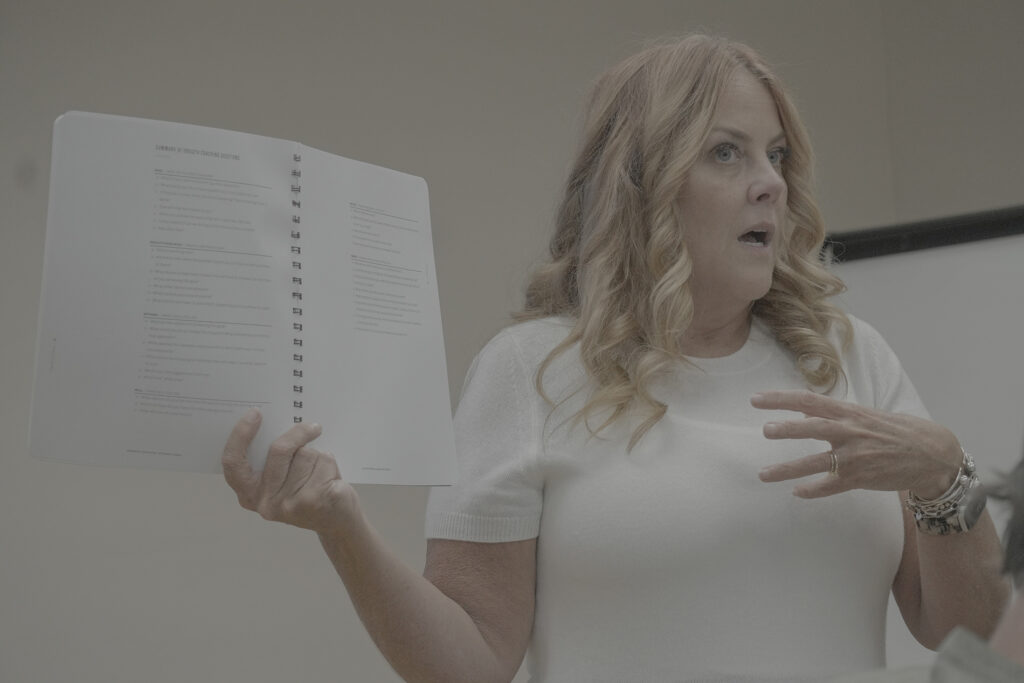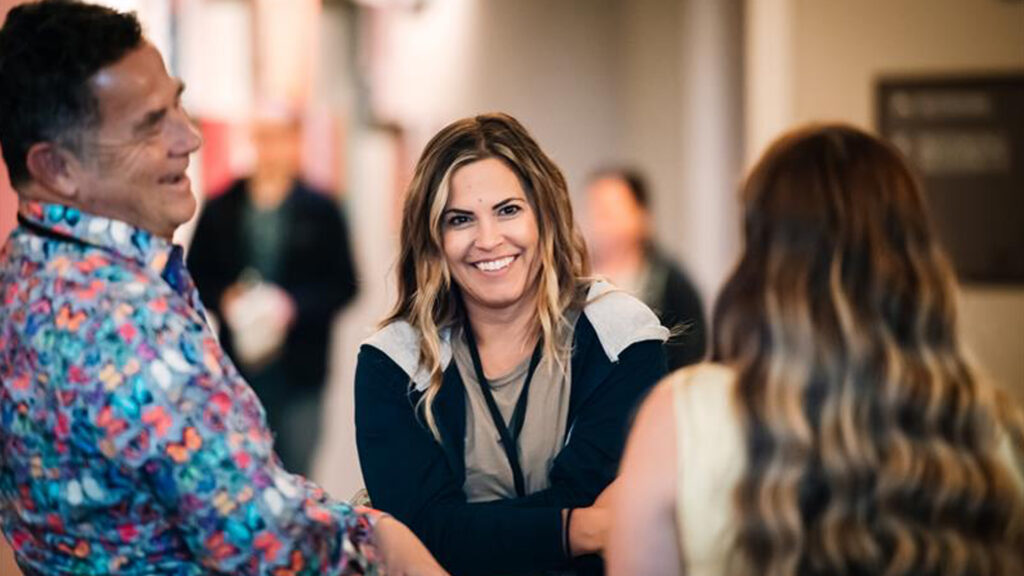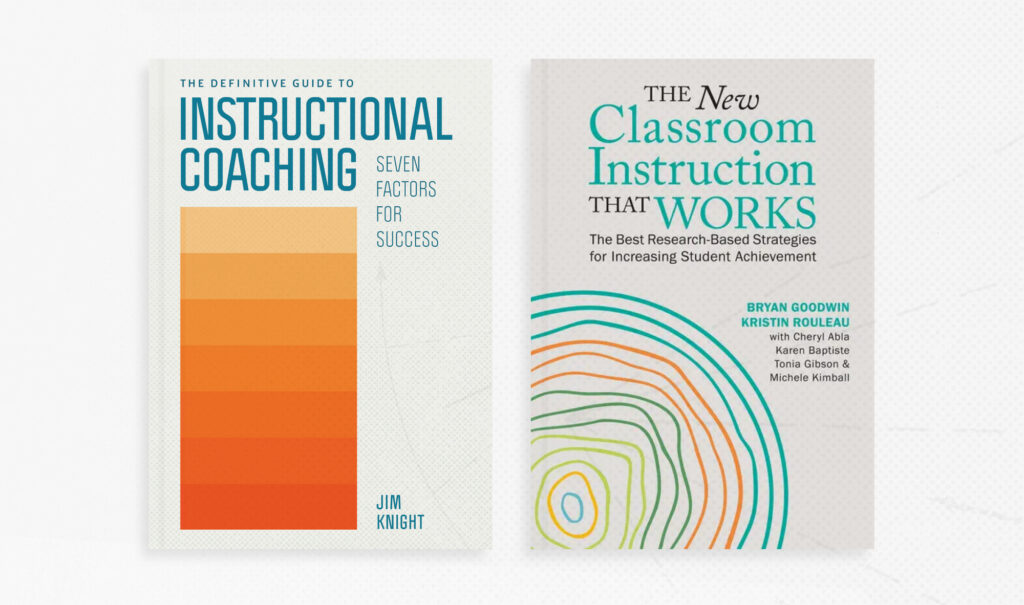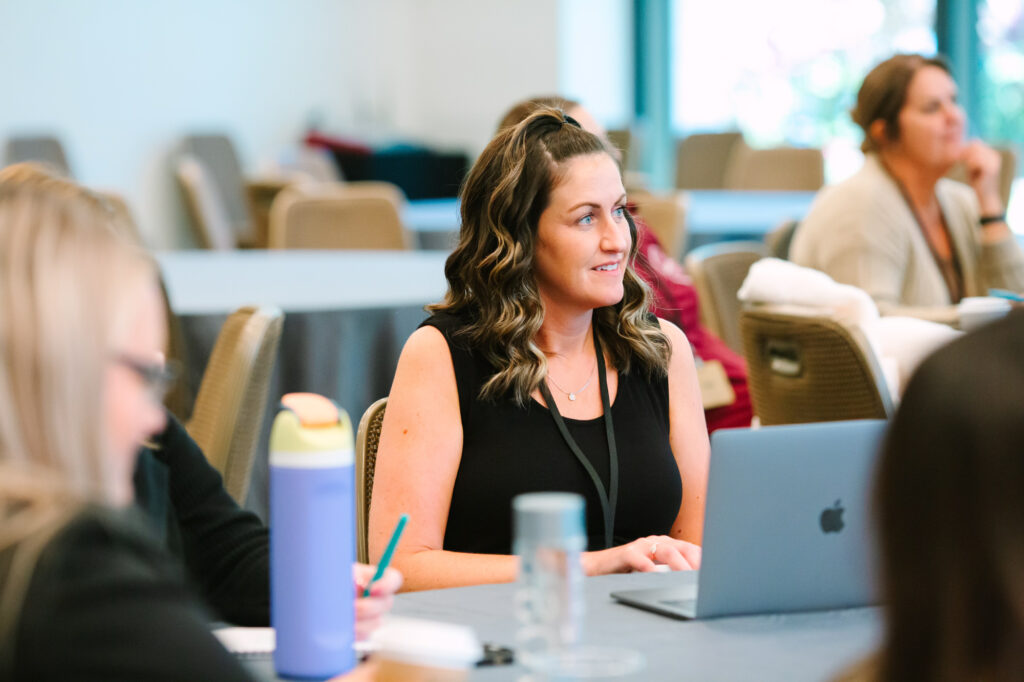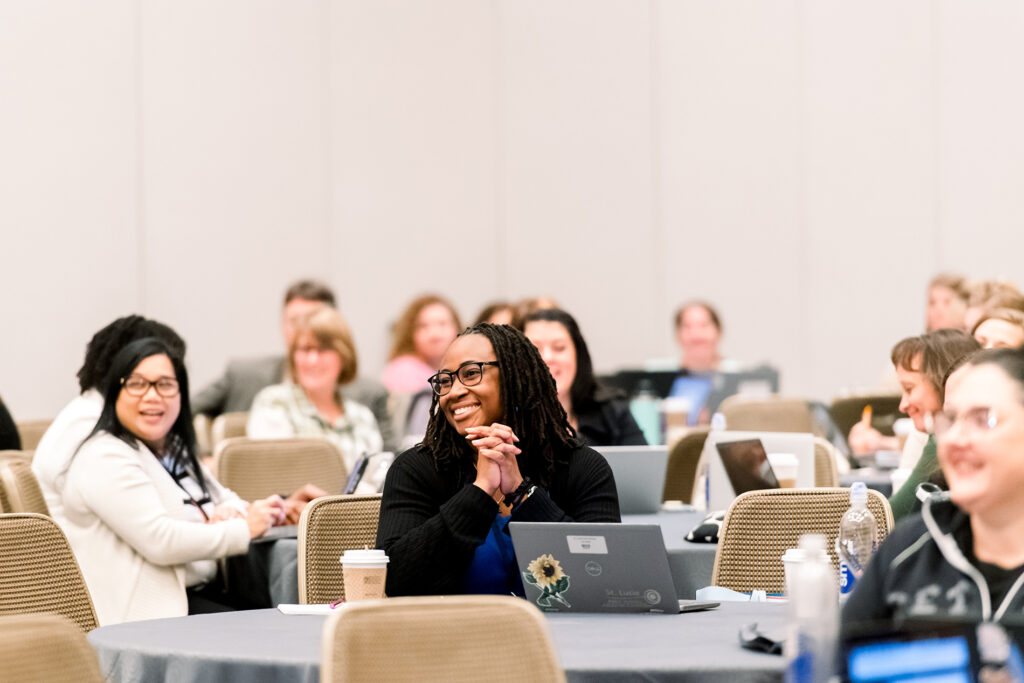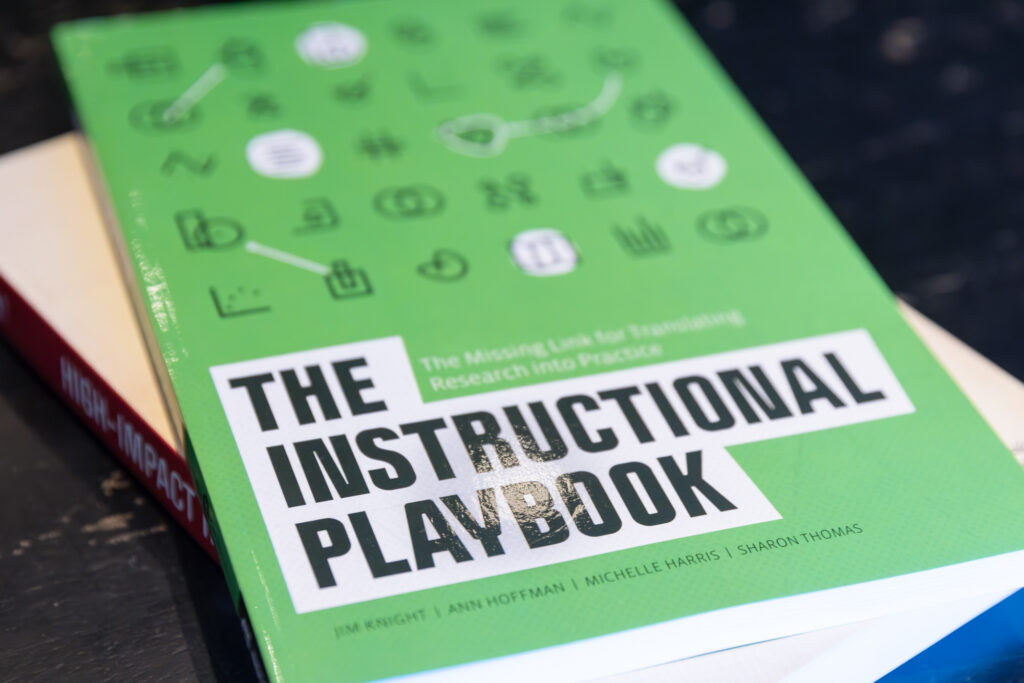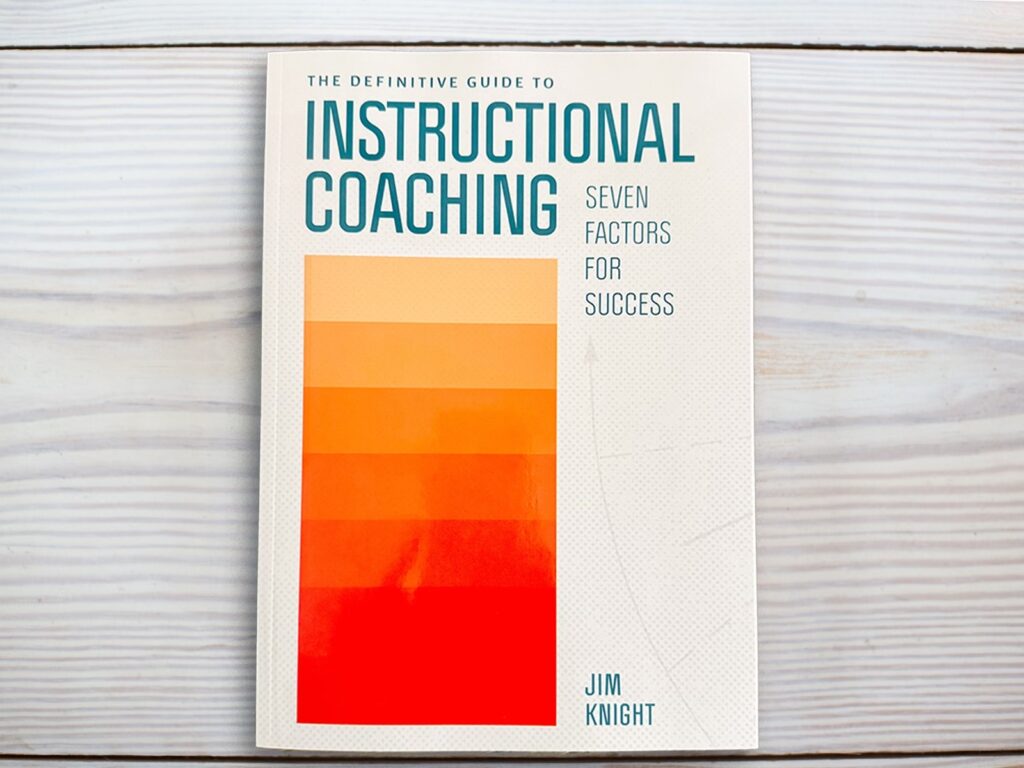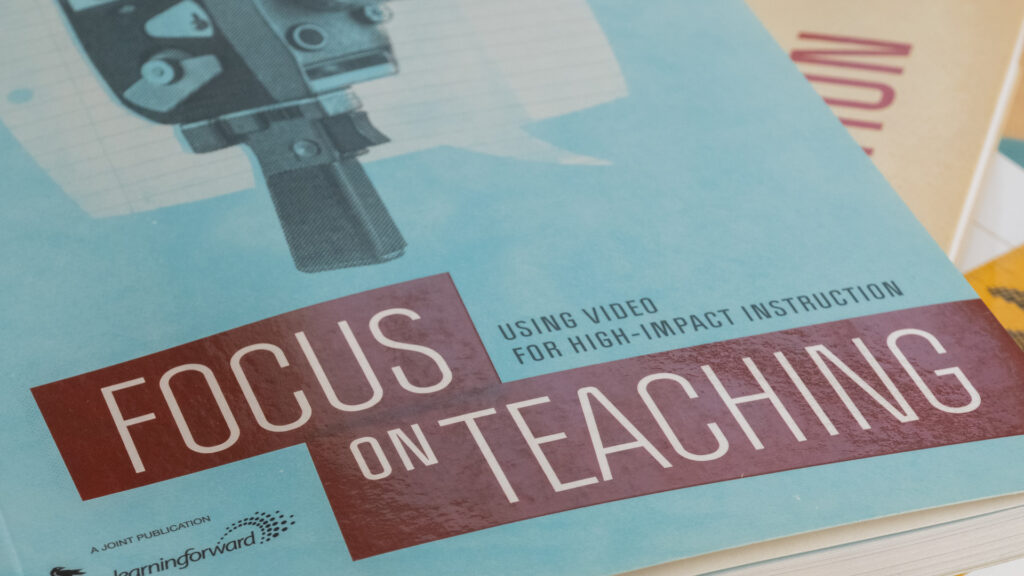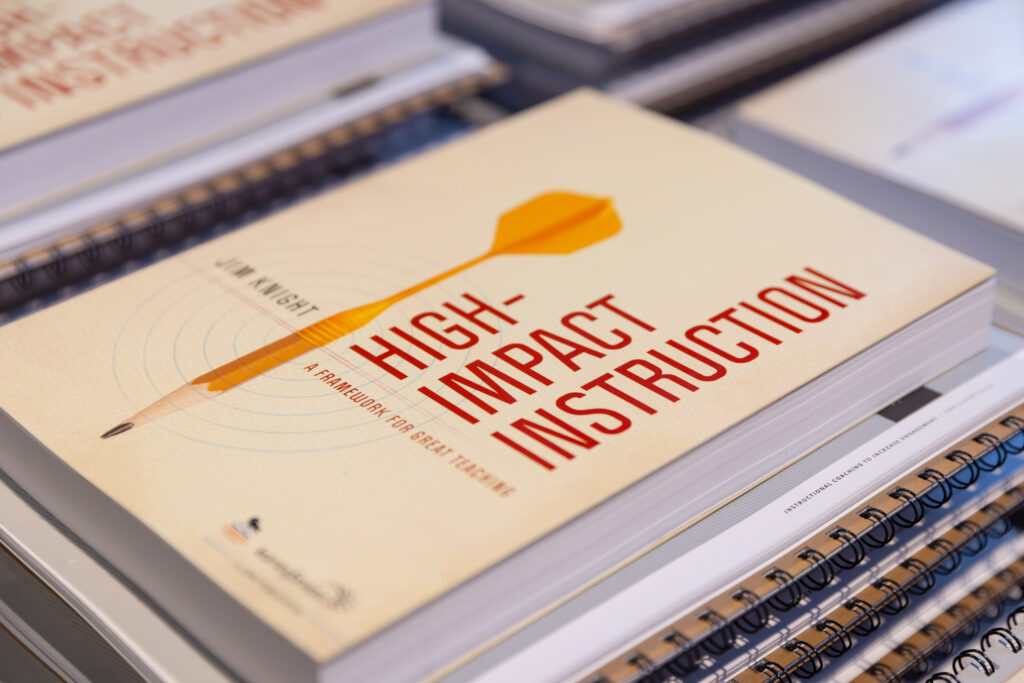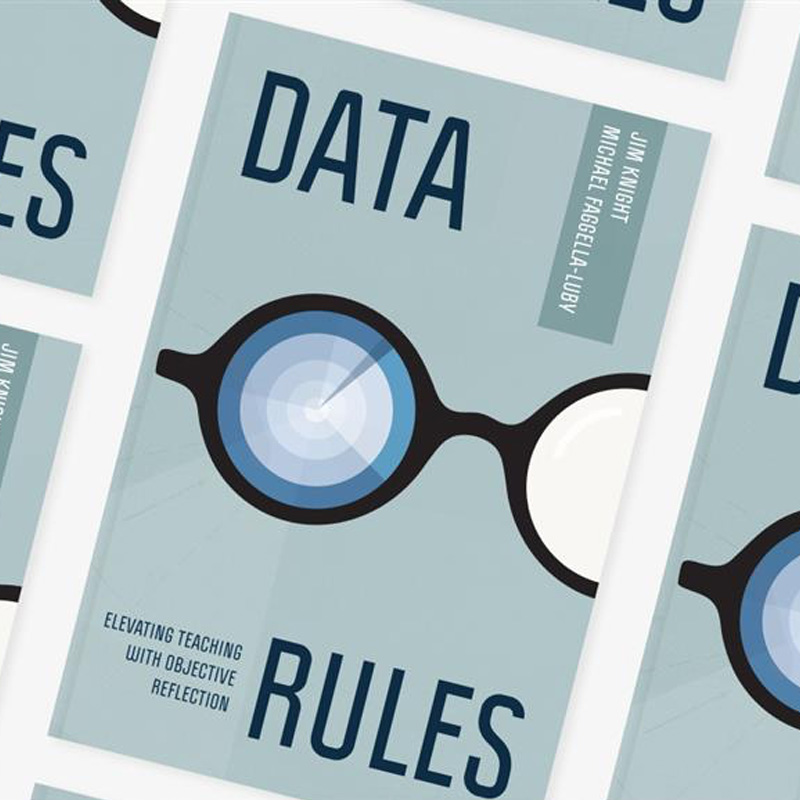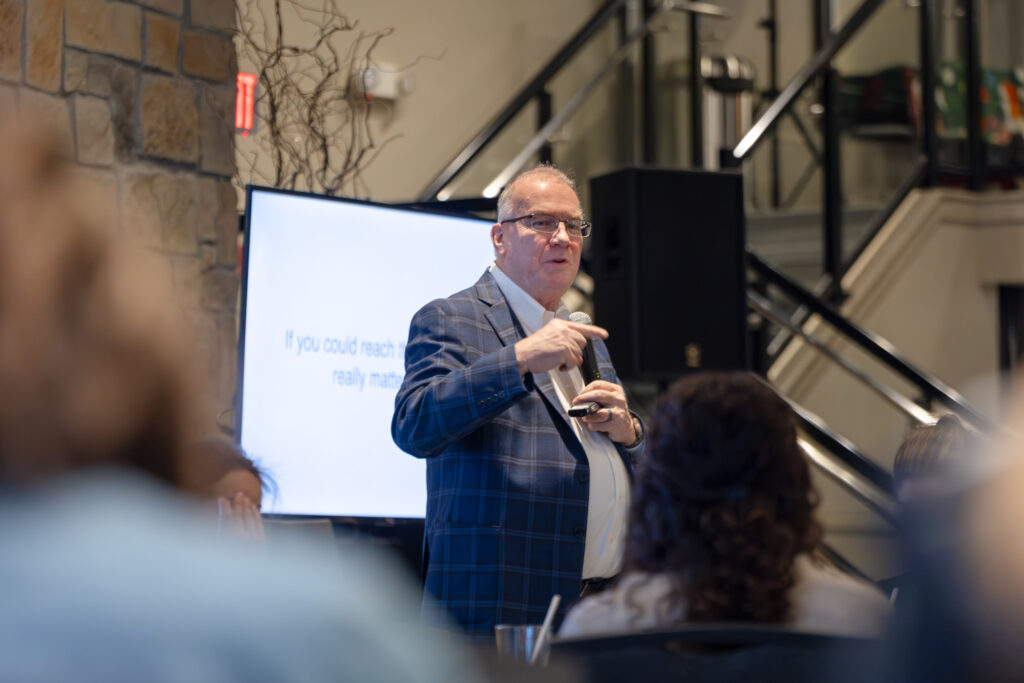In the first three posts of our Preparing for the New School Year series, we covered strategies to enroll teachers in coaching, using group presentations to enroll teachers, and the importance of establishing role clarity and agreeing on time management with an administrator. With the new year now underway for many, this post will focus on one of a coach’s most essential tools: The Impact Cycle checklist.
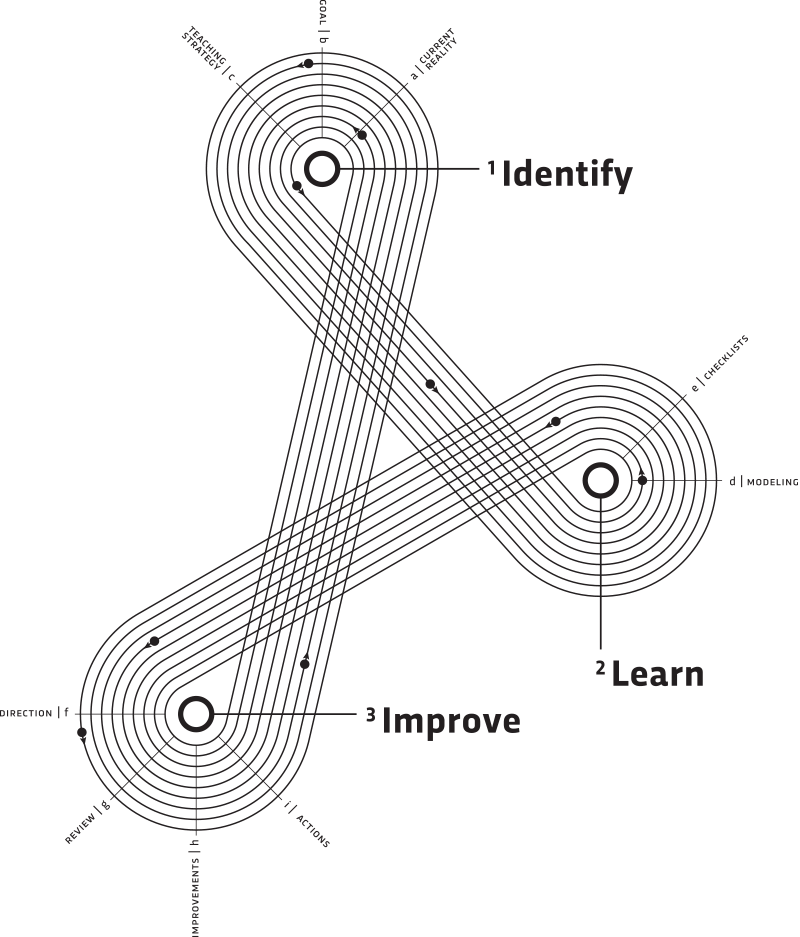
The Impact Cycle
ICG has spent decades researching what goes into effective coaching and what differentiates it from ineffective and possibly destructive coaching. The result of their research and practice is the Impact Cycle – a framework to facilitate constant learning and improvement.
Coaches following this process are able to help teachers set and achieve realistic, measurable goals that will make the biggest possible impact on student learning. Jim Knight’s book, The Impact Cycle, explains and examines this process in depth, offering examples of the coaching cycle in action and providing resources for implementation.
The Impact Cycle consists of three stages:
- Identify
- The coach and teacher collaborate to set a goal and select a teaching strategy to meet the goal.
- Learn
- The coach explains and models teaching strategies so the teacher can learn how to implement the strategy.
- Improve
- The coach monitors how the teacher implements the teaching strategy and whether students meet the goal. Then coach and teacher decide any adjustments necessary for the practice to be as effective as possible.
As teachers and coaches work through the coaching cycle, the use of the Impact Cycle checklist will guide them through the process. The checklist does not dictate exactly what a teacher must do, but rather helps teachers and coaches make the best decisions about which goals, strategies, and implementation will improve student learning most.
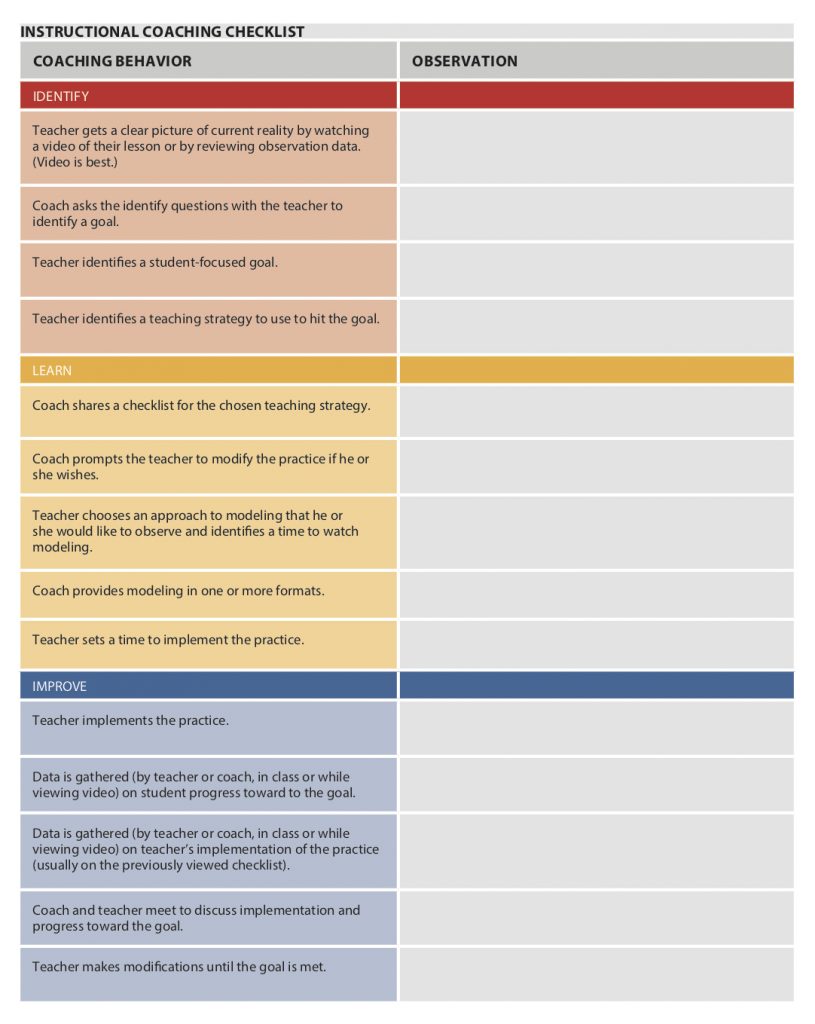
Identify
First, the coach and teacher need to gather and observe data from the classroom. In this stage, video offers a tremendous advantage because it allows teachers a glimpse of themselves in action that they would otherwise never see.
The coach and teacher then identify the goals the teacher would like to set for themselves and their class. In order to make sure that the goals being set will have the greatest impact, it is helpful to make sure they are PEERS goals (Powerful, Easy, Emotionally compelling, Reachable, Student-focused) and ask the following series of questions to determine what they will be:
- How close was the lesson to the teacher’s ideal?
- What would have to change to get there?
- What would the students be doing?
- What would that look like?
- How would we measure that?
- Do you want to set that as a goal?
- What would be the impact of hitting that goal?
- What strategies will you use to hit that goal?
Once a goal has been determined, the teacher and coach choose a strategy they believe will address it the most effectively. The items on the checklist guide the coach and the teacher through the steps needed to discover what they need to focus on and how.
Learn
An Impact Cycle checklist is extremely helpful for coaches introducing strategies as well as for the teachers learning them. It ensures that the teacher has all the support they need to learn and implement the new strategies they have chosen with the coach.
One of the key steps in this stage is the coach providing modeling. The teacher will choose a modeling approach that suits their needs and set a time to observe. There are at least five different ways in which modeling can occur:
- In the classroom
- In the classroom with no students
- Co-teaching
- Visiting other teachers’ classrooms
- Watching video
The checklist items help to determine the best approach for the teacher and their students and prepares them to take action. As a last step in this stage of the cycle, the teacher will set a time to implement the newly-learned practice.
Improve
Coaches then monitor and review the teacher’s implementation of the chosen strategies. The coach and the teacher should discuss how to modify the approach to make it as effective as possible.
The following questions can help guide this conversation:
- What do you feel good about?
- Did you hit the goal?
- If so, do you want to refine the practice further or identify a new goal?
- If not, do you want to stay with the chosen practice or try a new approach?
- If you stay with the chosen practice, how will you modify it to increase its impact?
- If you choose another practice, what will it be?
- What are your next actions?
Following the checklist through the final stage of the coaching cycle guarantees that coaches and teachers have all of the necessary data and tools to determine the effectiveness of their approach, modify it if necessary, and achieve their goals.

The Power of a Checklist
Effective coaching requires coaches to understand the complexities of helping adults, understand a set of teaching practices that can be applied to the struggles facing teachers and students, communicate and lead clearly, and work within a supportive system.
All of those elements of coaching are important, but the use of a checklist to guide teacher and coach through the Impact Cycle may be the one of the most important factors to ensure a positive impact in the classroom. Each stage of the cycle is crucial to successful coaching, and the Impact Cycle checklist provides clear guidance to improve instruction and learning. It is an invaluable resource in navigating through the coaching cycle to create real successes in the classroom.
…
For a more detailed article on the Impact Cycle and the the Impact Cycle checklist featured above, read 3 Steps to Great Coaching, published in Learning Forward’s JSD in 2015.
For more coaching resources for the new school year, check out the Resources page of our website.
